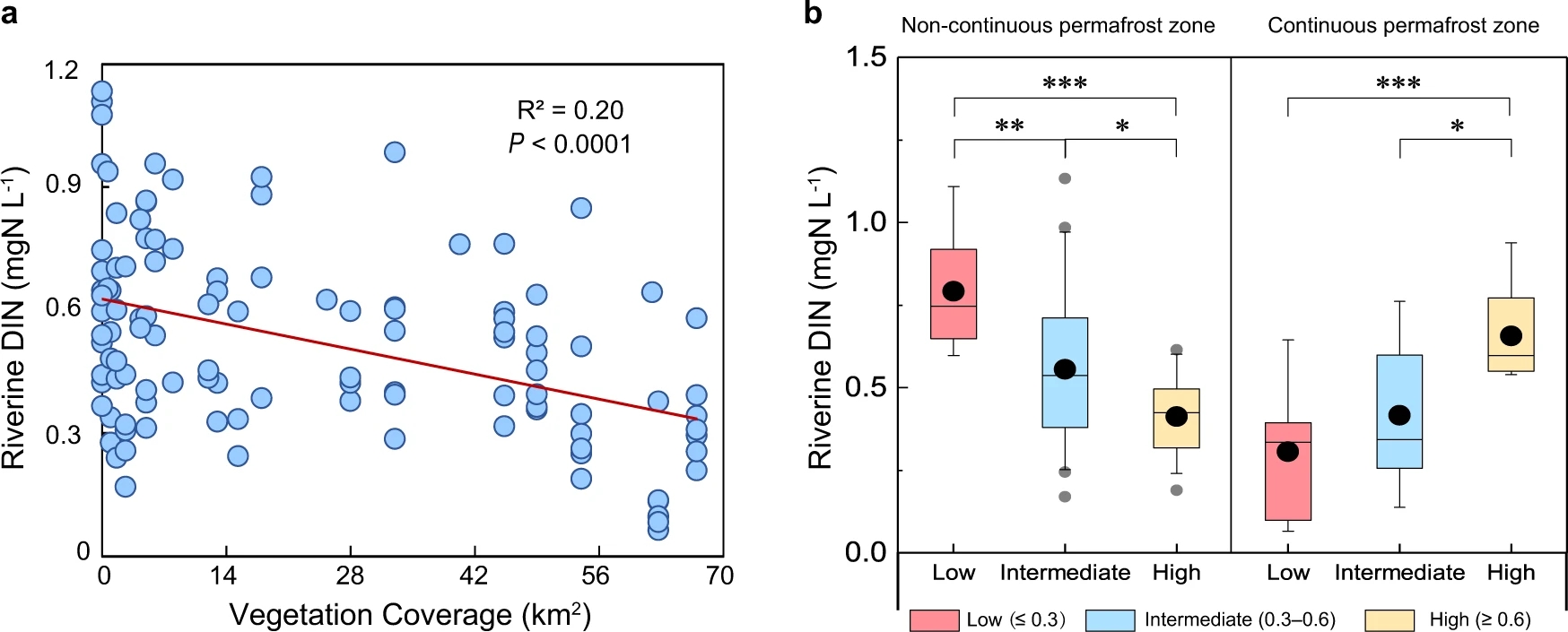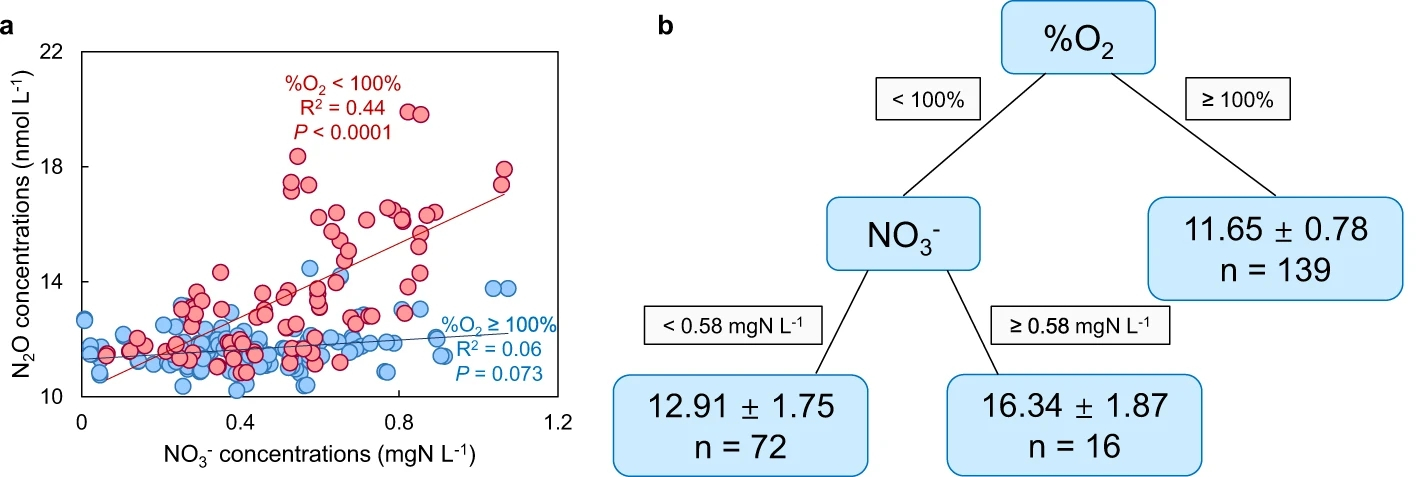BNU Professor Xia Xinghui and his team published an article in Nature Communications, revealing that the rivers on the East Qinghai-Tibet Plateau are the minor sources of atmospheric N2O
Nitrous oxide (N2O) is a major stratospheric ozone destroyer and the third most important long-lived greenhouse gas. Streams and rivers emit substantial amounts of nitrous oxide (N2O) and are therefore an essential component of global nitrogen (N) cycle. Permafrost soils store a large reservoir of dormant N that, upon thawing, can enter fluvial networks and partly degrade to N2O, yet the role of waterborne release of N2O in permafrost regions is unclear. Permafrost-affected rivers can shift from minor sources to strong emitters in the warmer future, likely giving rise to the permafrost non-carbon feedback that intensifies climate changes. The emission mode and mechanism of N2O in water bodies in permafrost areas are not clear, and the magnitude of its emission and how it affects climate change are unknown. The existing studies can not answer these questions.
Professor Xia Xinghui from School of Environment of BNU, through three-year direct observation of the Yellow River, Yangtze River, Lancang River and Nu River in the east of the Qinghai Tibet Plateau, his research group revealed the N2O emission mechanism of permafrost rivers and quantified the N2O emission magnitude of rivers in the Qinghai Tibet Plateau. The research found that permafrost rivers draining the East Qinghai-Tibet Plateau behave as unexpectedly minor sources of atmospheric N2O. Because riverine dissolved inorganic N concentrations decreased with increasing vegetation cover for all sites. In addition, the widespread occurrence of well-oxygenated overlying waters of EQTP rivers limits the extent of hypoxic-anoxic regimes needed for N2O generation via denitrification. Finally, the ratio of nitrite reductase to N2O reductase of microorganisms in the river is very low, resulting in low N2O yield (i.e. N2O is easier to be reduced to N2). However, these permafrost-affected rivers can shift from minor sources to strong emitters in the warmer future, likely giving rise to the permafrost non-carbon feedback that intensifies warming.


The research results were published in nature communications on February 17, 2022 under the title of “Unexpectedly minor nitrous oxide emissions from fluvial networks draining permafrost catchments of the East Qinghai-Tibet Plateau”. Zhang Liwei, Ph.D., School of environment, BNU, and Zhang Sibo, postdoctoral student of the School of Ecology, Environment and Resources, Guangdong University of technology, are the co-authors, and Xia Xinghui, Professor of the School of environment, BNU, is the corresponding author. The collaborators include academician Yang Zhifeng, academician Ni Jinren, Professor Tom J. battin of the Federal University of technology in Lausanne, Professor Emily H. Stanley of the University of Wisconsin Madison, and Dr. Liu ran of Beijing Jiaotong University. The research was supported by the National Natural Science Foundation of China and national key R & D projects.
About this article:Liwei Zhang, Sibo Zhang, Xinghui Xia*, Tom J. Battin, Shaoda Liu, Qingrui Wang, Ran Liu, Zhifeng Yang, Jinren Ni and Emily H. Stanley. Unexpectedly minor nitrous oxide emissions from fluvial networks draining permafrost catchments of the East Qinghai-Tibet Plateau.


